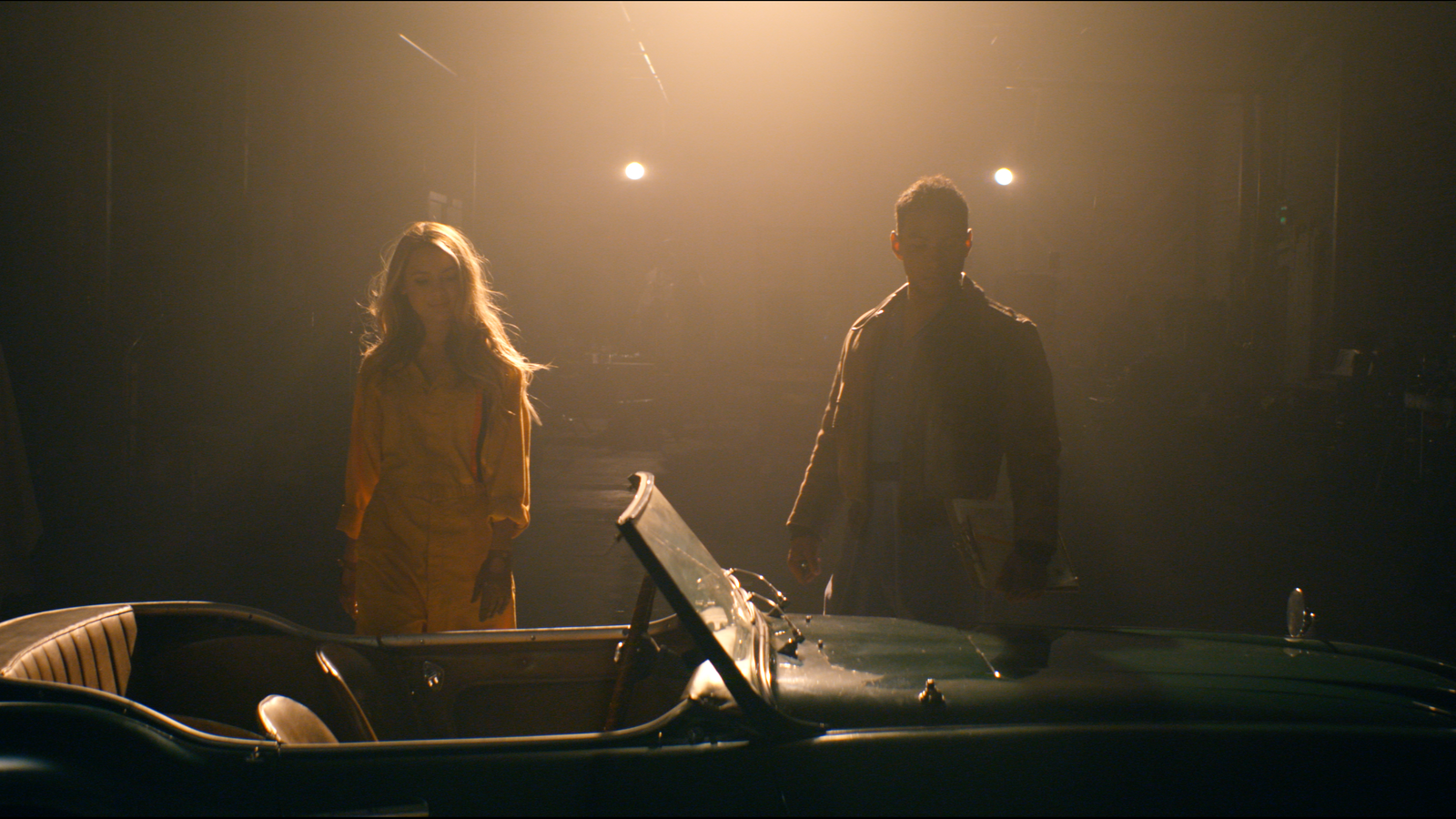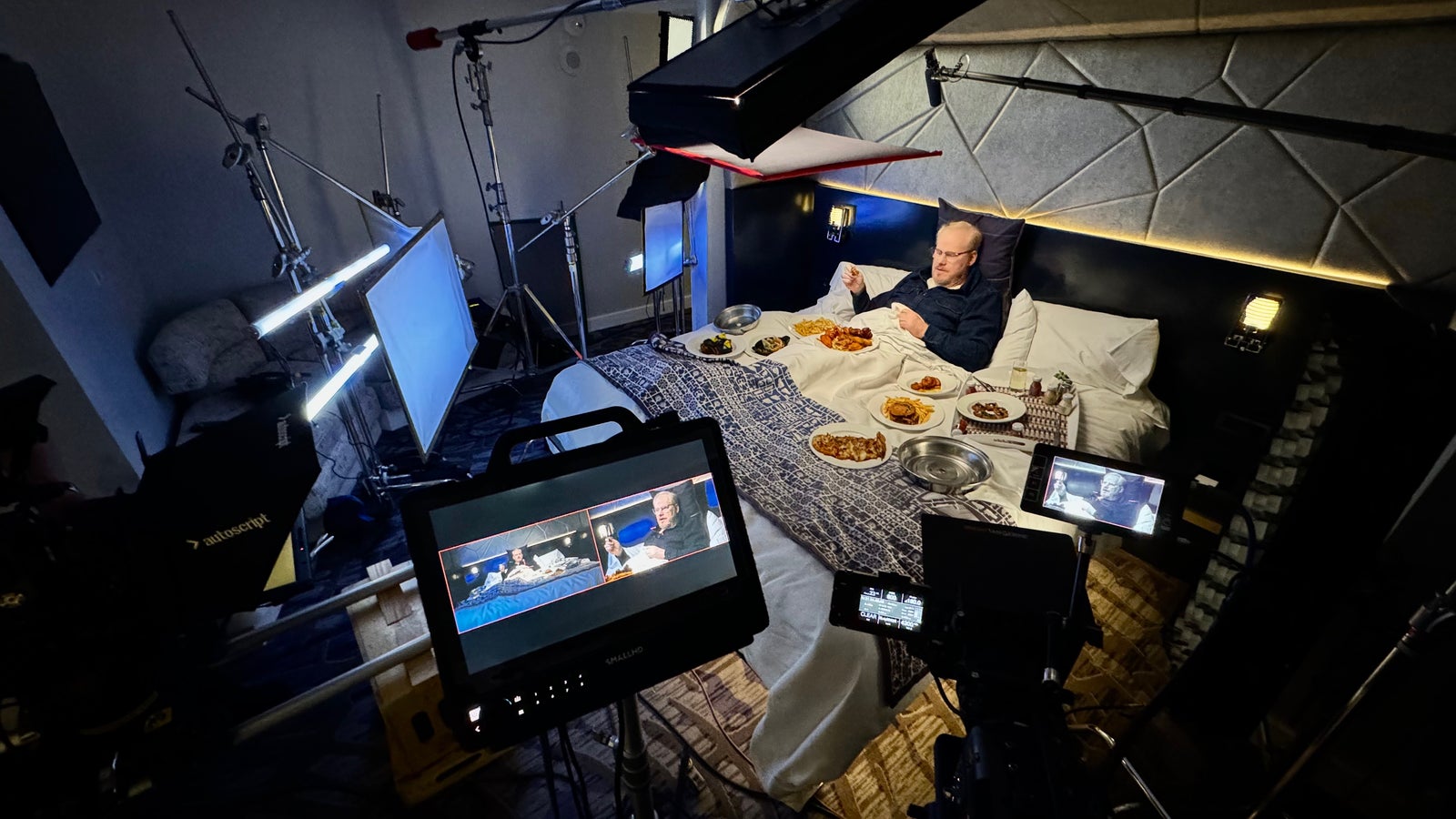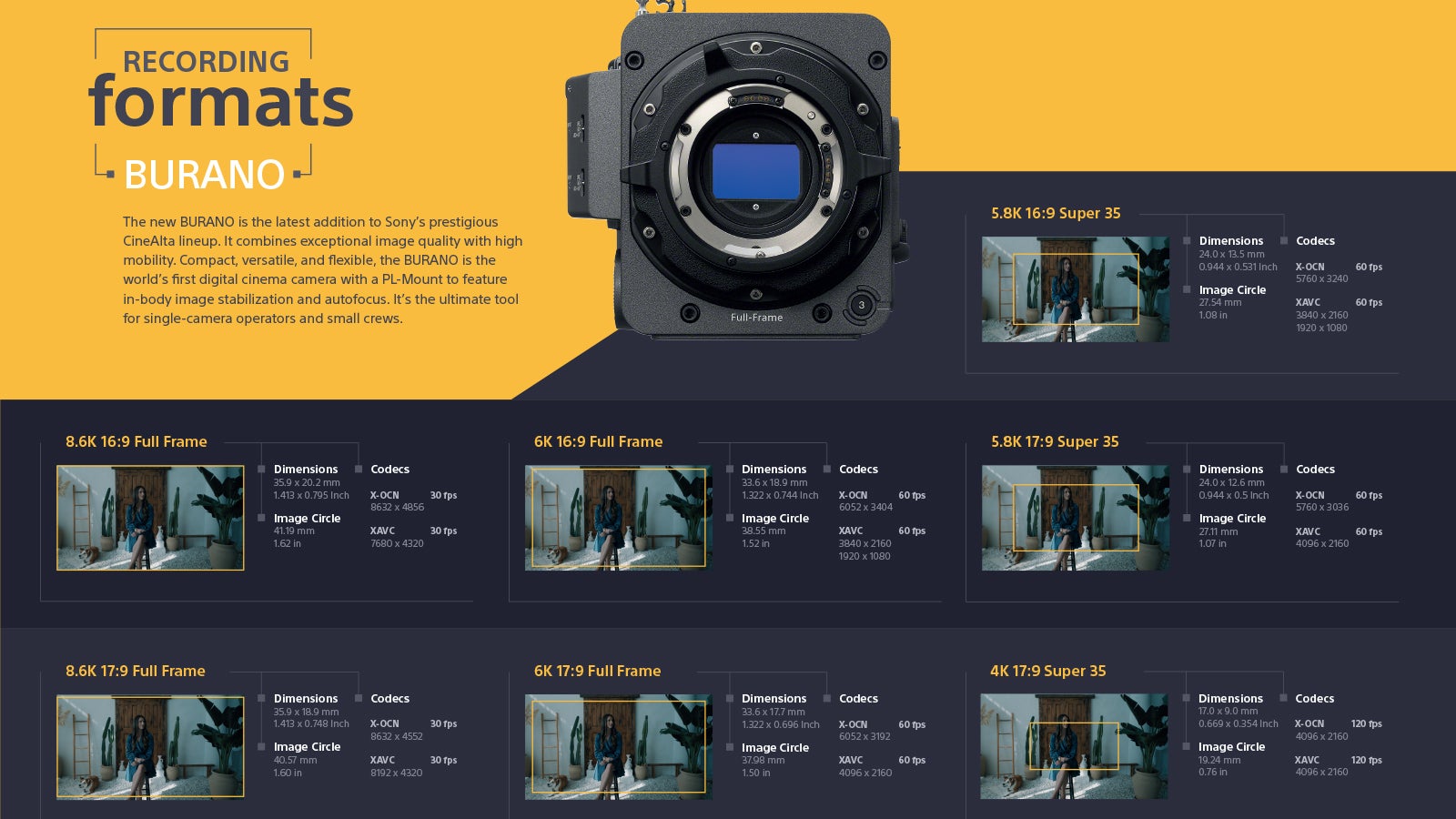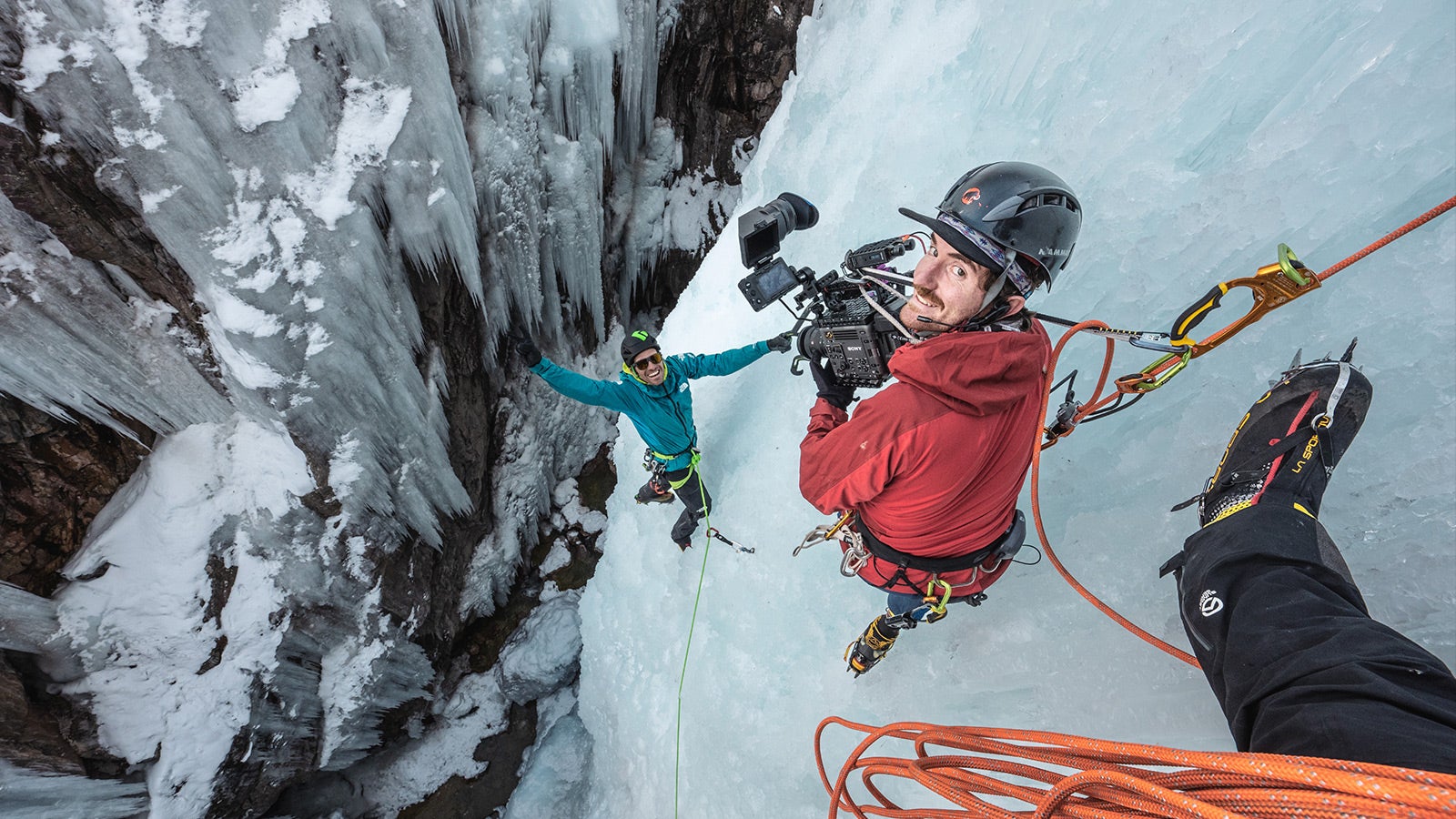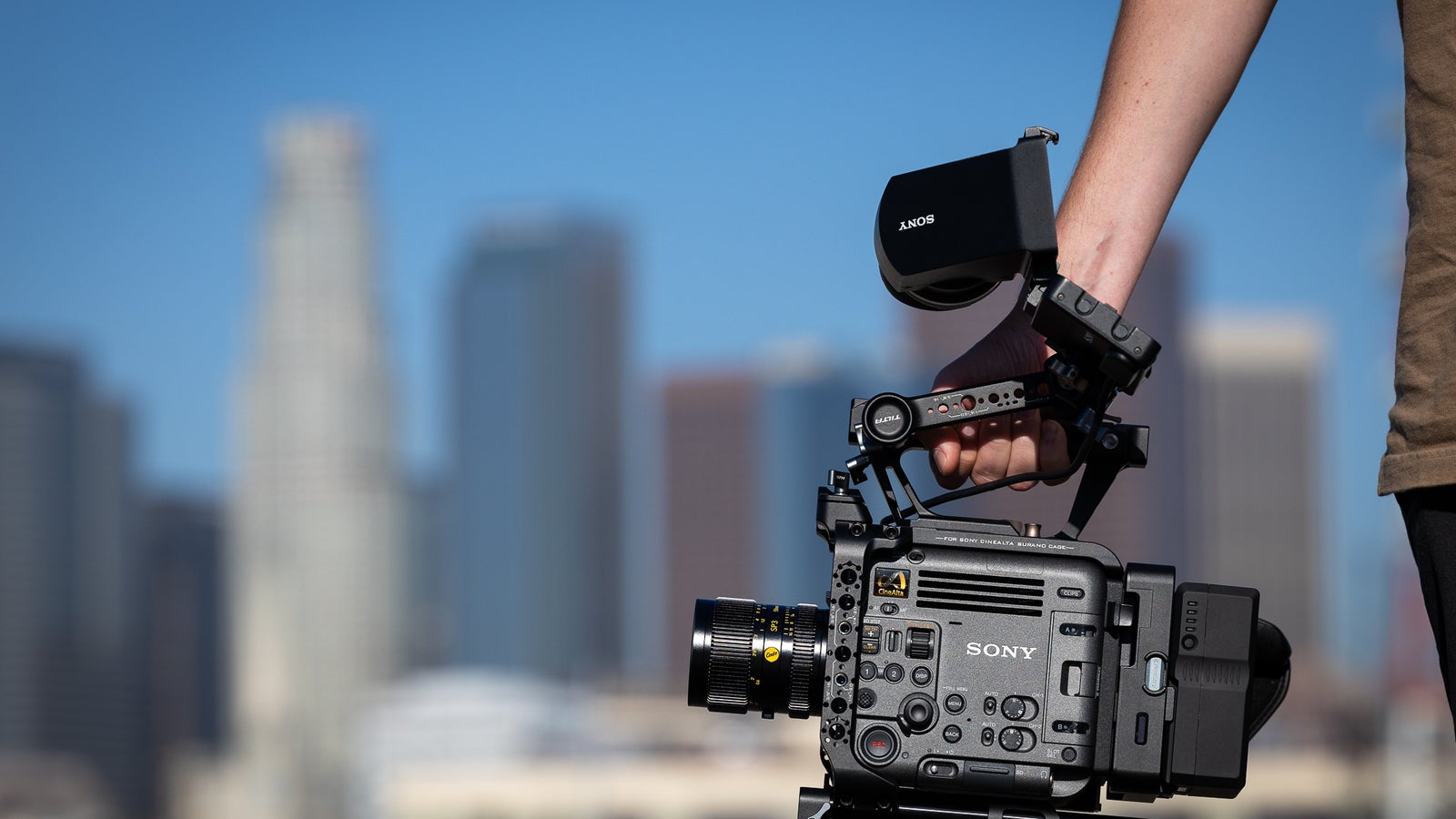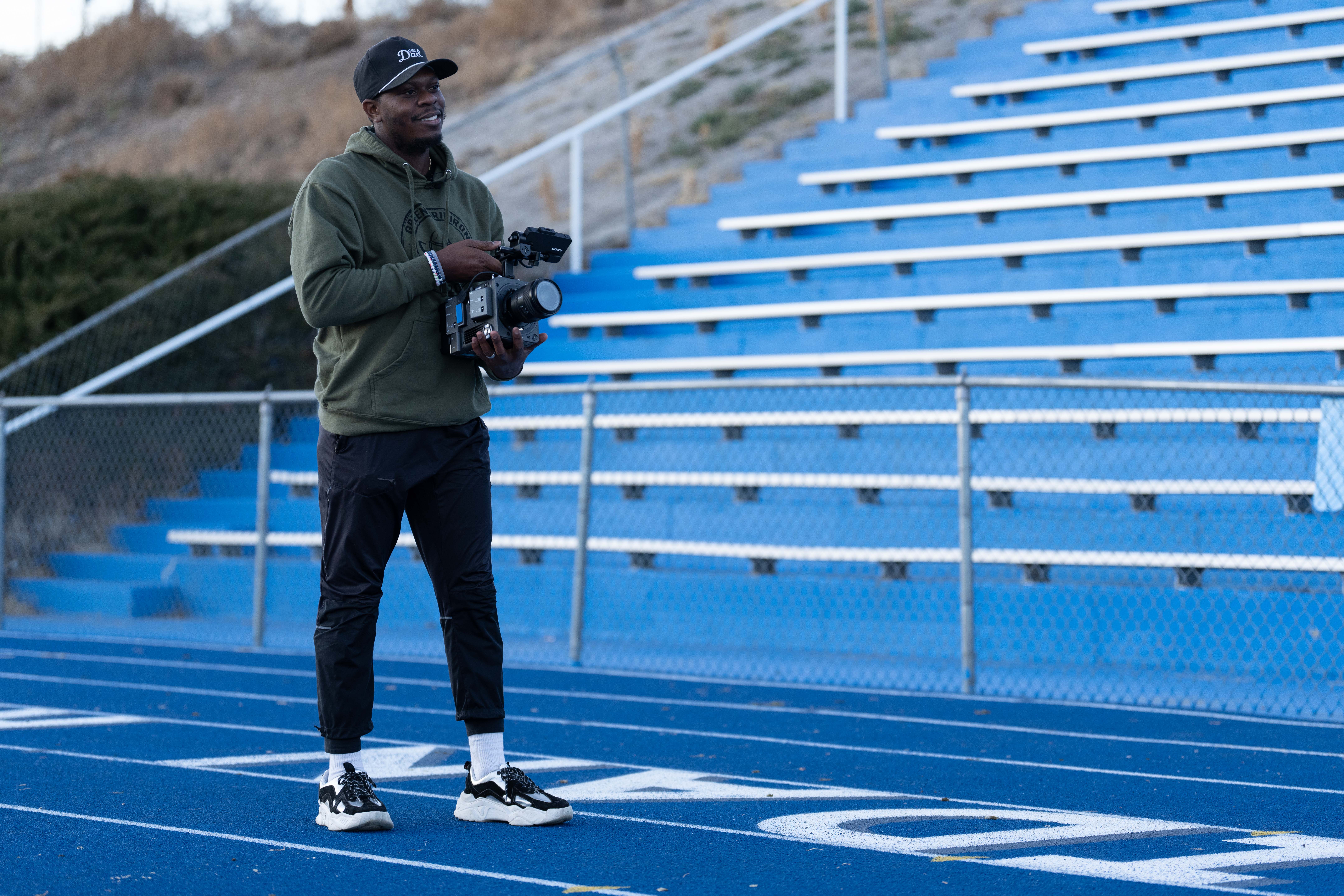
01-25-2024 - Gear
Action Sports DP Lemar Griffin Tests Out the Versatility of the BURANO in the Arena with the NBA, NHL
By: Oakley Anderson-Moore
Lemar Griffin has had sports running through his veins for as long as he can remember. Growing up in Lakeland, Florida, and Yuma, Arizona, where he played football in college. His goal? Make it to the pros.
In fact, Griffin did make it to the NFL – not as a player, but as a filmmaker. As a photographer, cinematographer, and editor, Griffin has captured some of the best athletes in the world.
“I got the privilege to shoot the Tampa Bay Buccaneers during their Super Bowl season despite the global pandemic,” describes Griffin. “Basically, I bought my Sony A1 to be able to do the best job I could for Shaq Barrett, Tom Brady, and all the rest of the guys.”
Once Griffin became a proud girl dad, he decided to stop traveling for the NFL and built a production company in Denver with his wife, working largely with athletes and design-build brands. He’s expanded his roster to include all sports, including those that are completely new to him.
“When I'm shooting hockey or lacrosse, and just getting into underwater cinematography with scuba-diving,” says Griffin. “Those were sports that I wasn't, as an African-American male, really exposed to. But I respect them. When I go into those sports and shoot, I dive in deep. Whether that's women's basketball, tennis, table hockey, everything, I obsess over it. When I'm shooting, it gives me a different edge because I truly respect what they're doing.”
To capture the world’s best athletes in action, Griffin has to be in the right place at the right time. There’s no room for error with the camera. When the Sony BURANO digital cinema camera was announced this Fall, Griffin knew he had to try it out.
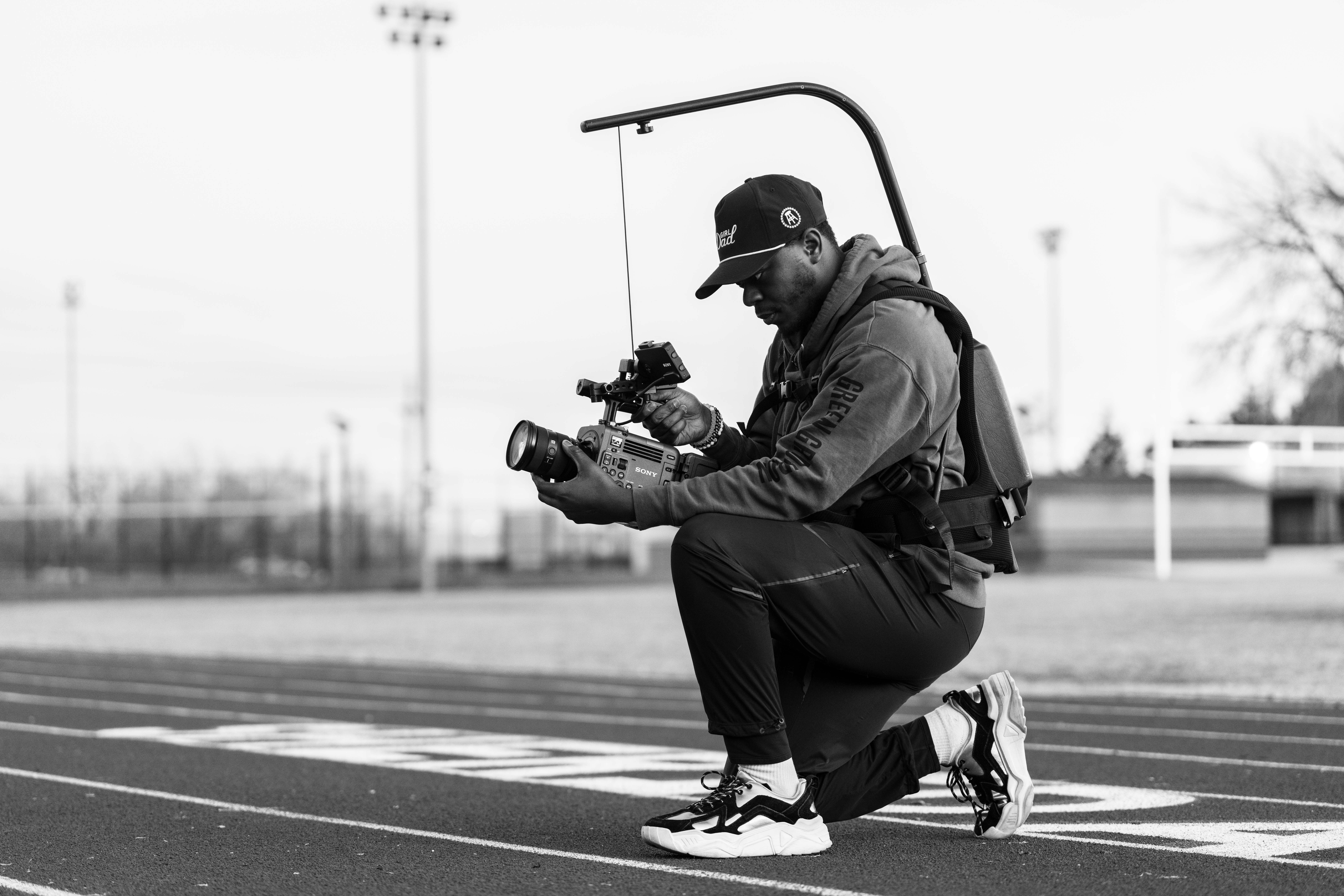
Photo Credit: Dora Griffin
Why Lemar Griffin’s first impression of the BURANO camera was versatility
Griffin first saw the BURANO at Sony’s Digital Media Production Center in Los Angeles.
“I just knew it was the camera for me,” explains Griffin. “And I don't want to say I don't care about the price because that would not be true. But knowing what the camera could do, I knew this would work as an investment.”
Griffin was so excited about the BURANO that Sony Cine sent Griffin a test unit to try out over the holidays. He brought the BURANO to a plethora of locations, including Ball Arena, Uncle Blacks Gym, Populous Hotel, Red Rocks Park and Amphitheater, Denver Stake Park, and Timeless Visionaries Studio.
“I pride myself on my versatility,” says Griffin. “So, I wanted to put the camera through as many real-world shooting scenario situations as I could.”
This meant working with lenses that are needed in the fast-paced action sports world.
“When Sony shipped the BURANO and once I took the PL-mount off and I saw the E-mount, it was so refreshing to me. I know all the big Hollywood DPs, they're shooting a lot of PL. But for someone like me, who needs to be versatile, I love that I had 8 E-mount lenses that I could put on the Burano right then. And knowing that I could put the PL back on as I advance in my career, that just blew my mind.”
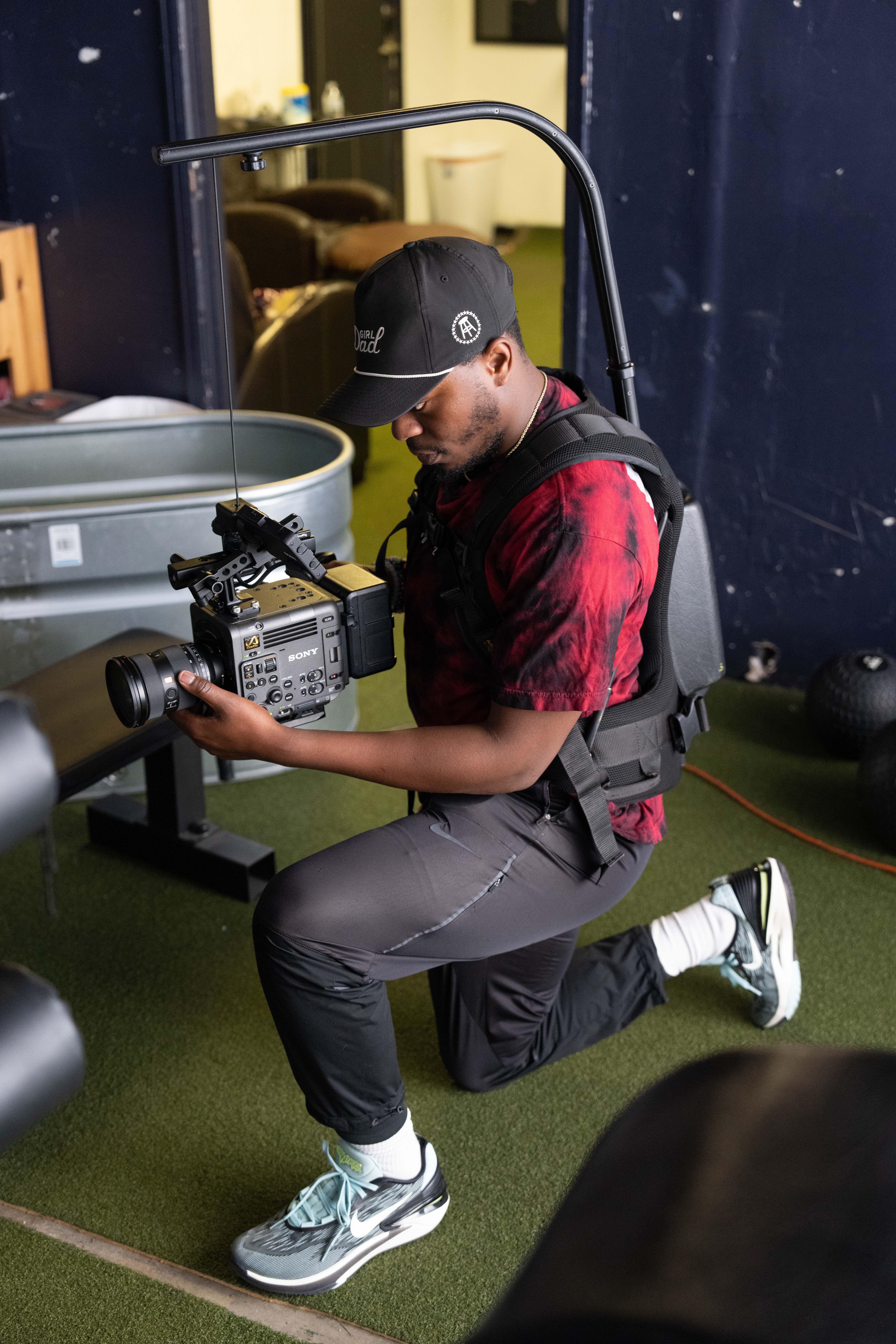
Photo Credit: Tim Meyers
Shooting the Denver Nuggets and Colorado Avalanche with the BURANO in the Ball Arena
First, Griffin reached out to the championship-winning teams about coming to shoot with the BURANO.
“I wanted to properly test the camera with the best athletes in the world, frankly,” explains Griffin. “I wanted to put the BURANO in that situation. And I guess you could say for me, I was an inexperienced operator because I've never used the BURANO. But from the time that I got it to when I gave it back, I didn’t miss a beat. It was never hard.”
When it comes to hockey, it can be very challenging to capture a tiny puck with the predominantly bright, white surroundings.
“In hockey, it's kind of hard because you’re shooting white jerseys on white ice,” jokes Griffin. “The camera was able to keep up with that and not miss a beat once I had the settings dialed in. The Avalanche’s media team, they shoot with FX6s. & FX3s. So having the opportunity to work with their team and seamlessly incorporate the BURANO footage was something that could be a game-changer in the future.
When it came to shooting the NBA, the challenge is capturing players at that fast pace.
“For the Denver Nuggets game, the BURANO didn't miss a beat. I was blown away by being able to shoot the top basketball players in 6K 60fps, 4K 120fps. I shot 8K every now and then, but for me the camera really lived in 17x9 at 6K 60fps. And I think most action sports’ creatives will probably live in that 6K 60fps range. It never disappointed."
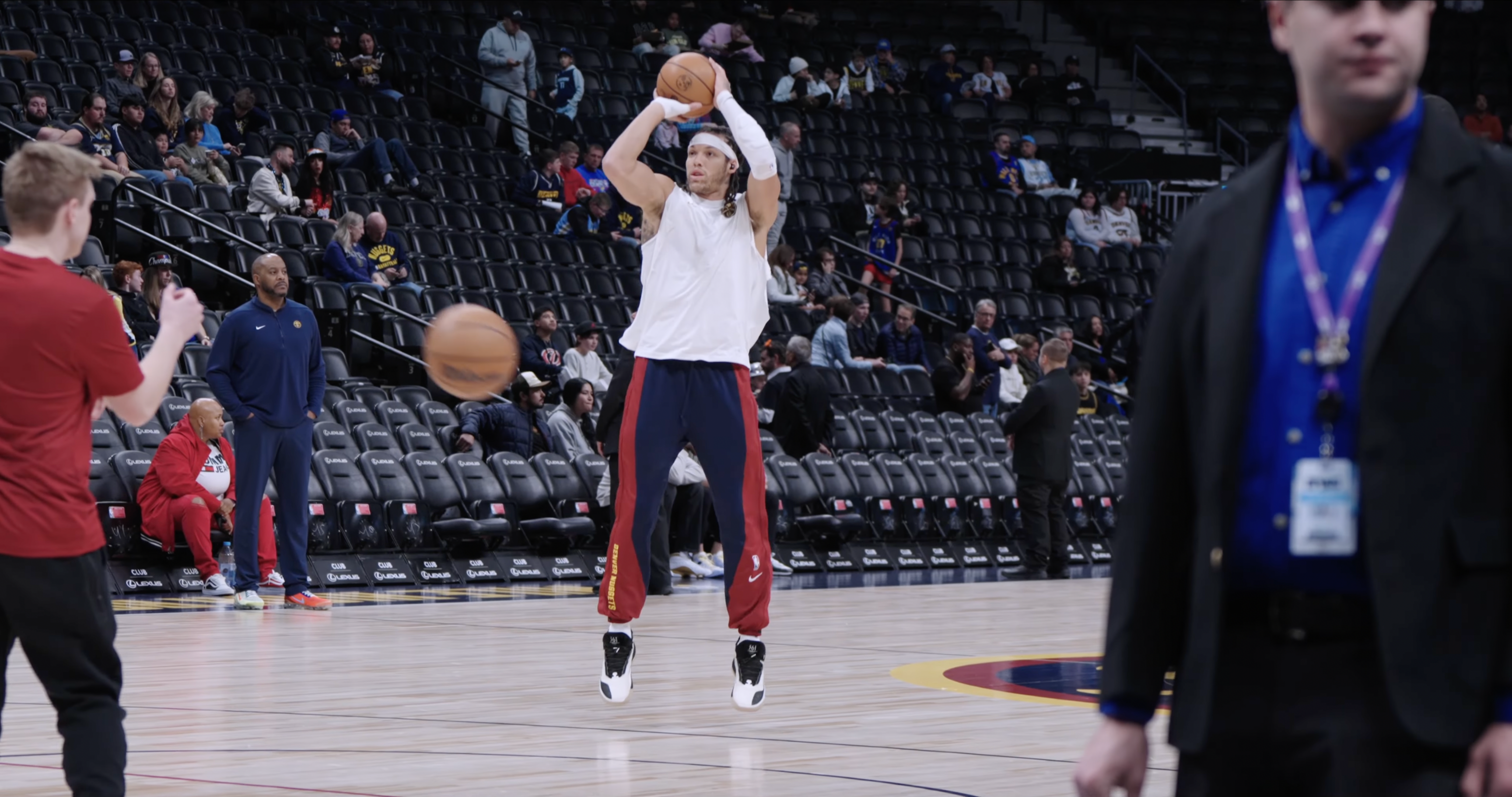
Screengrab from the BURANO camera filmed by Lemar Griffin
Working as a solo operator on music video with the BURANO camera
Griffin also wanted to be sure to test out the BURANO in an environment that’s almost the opposite of live sports.
“I shot a music video with a former ex-NFL player Janoris Jenkins in Breckenridge, Colorado,” describes Griffin. “I drove up there with the BURANO, and of course it was snowing in Breckenridge, and it's cold. You've got to think, this is my second day having the camera. Shooting a real, paid big time music video with a big-time artist, and he was blown away by the image. I was blown away by the image.
With a small team and a big client, Griffin was able to thrive by pairing the BURANO with B cameras also in the Sony ecosystem.
“It worked so well with my FX3, A1, and BURANO. I was shooting those three cameras for the music video, running around, solo operator. I didn't have a big team. Seeing that I could shoot the BURANO handheld without having a team, it really just showed me that the camera is so versatile.”
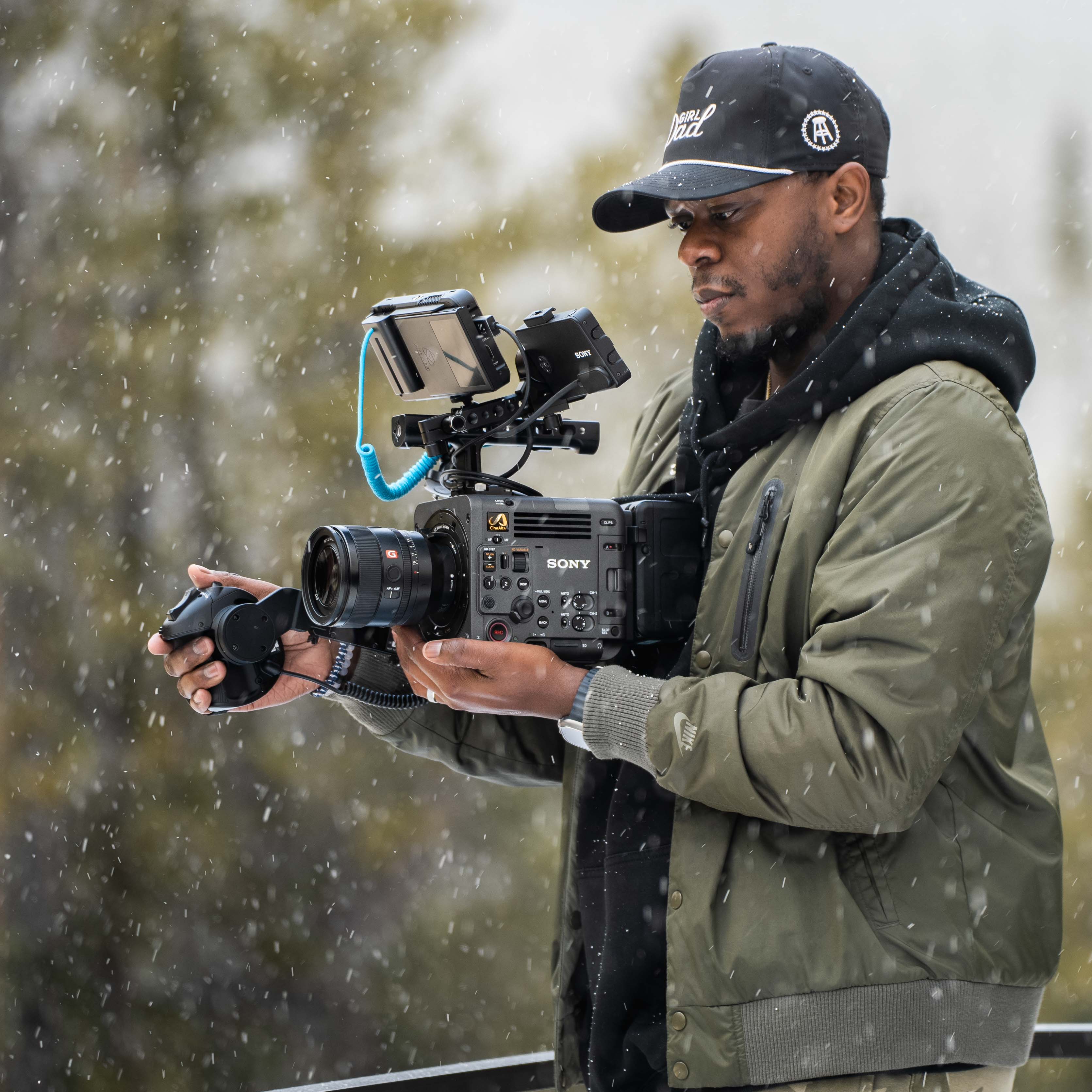
Photo Credit: Matt Gissentanna
How Griffin used stabilization, handheld, and autofocus on the BURANO camera
Initially, Griffin thought that since the BURANO was heavier than the cameras he had been working with, he wouldn’t be able to do handheld.
“I had an Easy Rig, which I thought I needed to operate the BURANO, just coming from the A1 and FX3,” describes Griffin. “Actually, I shot the Easy Rig probably very minimally each game; I was shooting handheld most of the time. If you're a person that likes shooting handheld, it's not going to restrict you from doing that.”
For Griffin, the ergonomics of the BURANO made it easy to operate.
“For me, the top handle was phenomenal. It felt so solid and so tough. I never had any trust issues. And with the screen on the side, for documentary filmmakers, solo creators, it was easy.”
Whether handheld or Easy Rig, Griffin found himself loving the BURANO’s autofocus.
“Every time I used auto focus and I set the settings right, it did not miss,” says Griffin. “Shooting on the ice, shooting hockey, I think that's probably one of the most challenging sports that I've shot. And at one point during the Avalanche game, I shot wide open at f1.2, using BURANO's internal NDs, and it did not miss a point. To be able to shoot at f1.2 on a 50mm with the BURANO, and I'm handheld on the ice, blew my mind.”
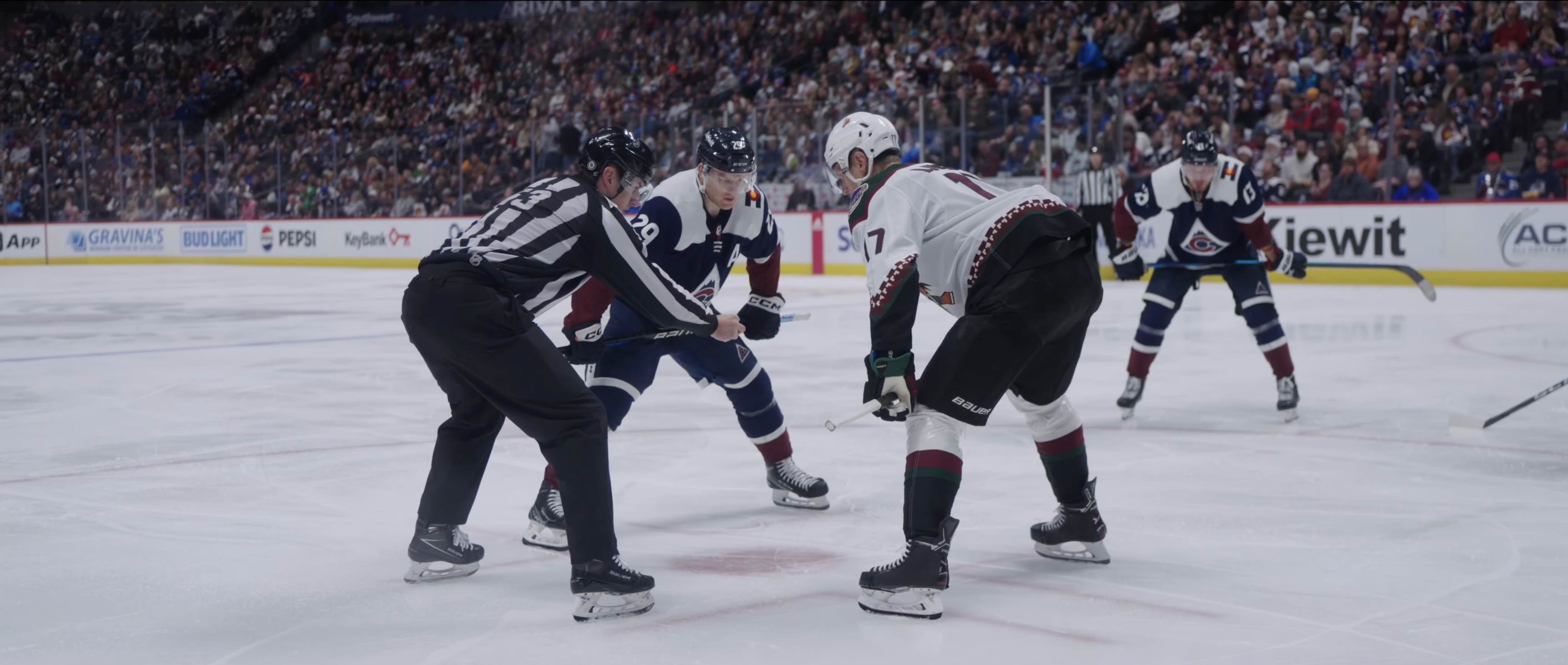
Screengrab from the BURANO camera filmed by Lemar Griffin
Exposing with Dual Base ISO on the BURANO camera in uncontrollable environments
One of the first custom settings Griffin programmed on the BURANO was for a button to effortlessly switch between dual ISO.
“With the base ISOs, the 3200 is just as clean as the 800,” says Griffin. “A lot of times I didn't even need to go to 3200, but for a night scene or when the arena goes dark, the images were so clean.”
Griffin mentioned that this was possible even when he was often on F4 glass.
“Sometimes I'm not even out there using the GM series or the most expensive lenses. I was using the F4 20-70 because I had it on hand. And the camera proved itself. So when the lights went out it was like, ‘Oh, this is going to be good.’ Setting the BURANO using both ISOs is a game changer because it just gave me so much flexibility.”
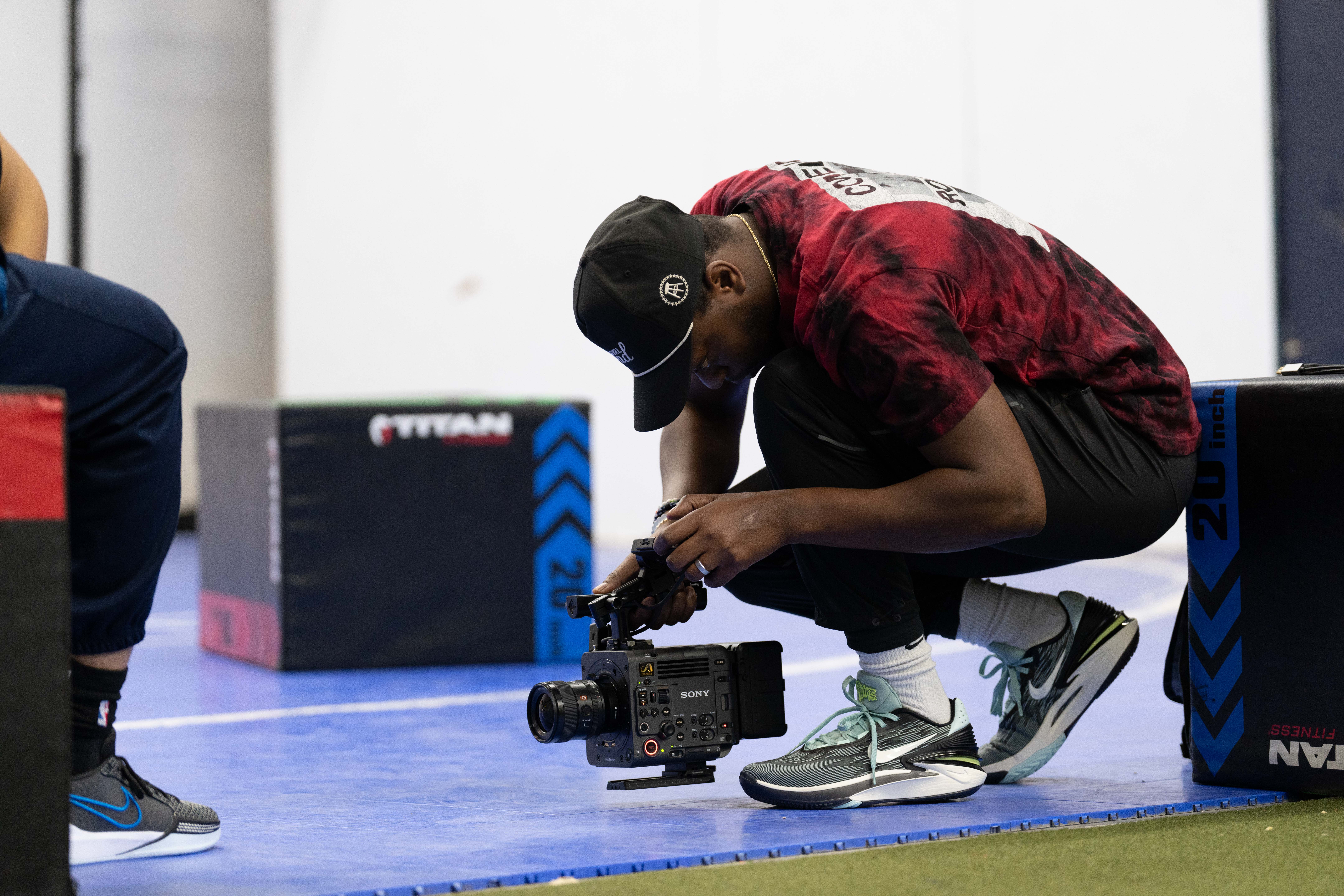
Photo Credit: Tim Meyers
What Griffin sees as the future possibilities with the BURANO camera
From his debut feature documentary ‘Man on a Mission’ with Tampa Bay Buccaneer Shaq Barrett to diving in the Bahamas to the 2024 Summer Olympics, Griffin thinks pretty much any project he’s got would be great to have the BURANO.
“I feel like, after using it, there's nothing I can't shoot with it,” says Griffin. “Having the BURANO with the A1, A9III, FX3, makes me feel invincible as a hybrid creative. I'm not the biggest filmmaker. I don't have the biggest budget, but with those sets of cameras, there's not a lot that me and my team couldn't do or achieve.”
